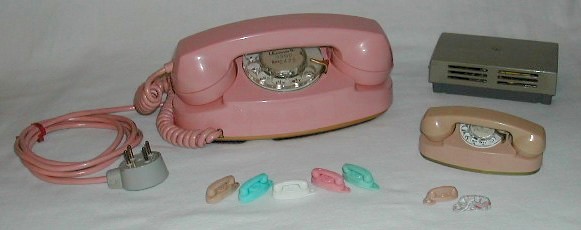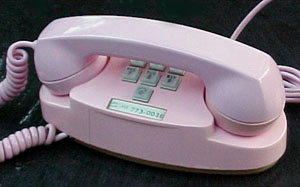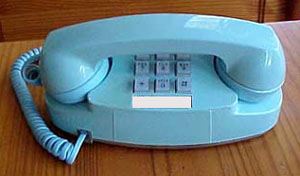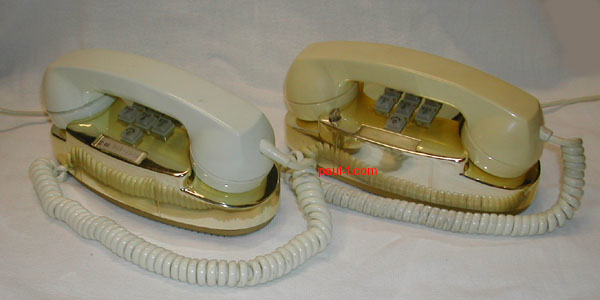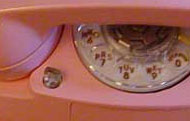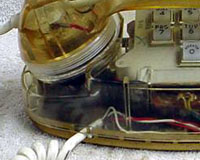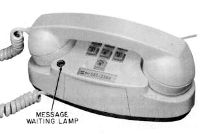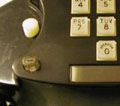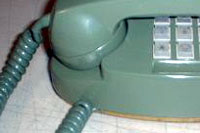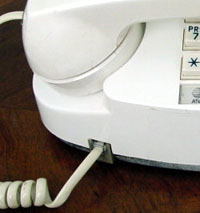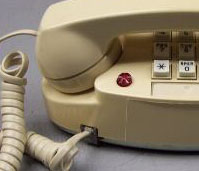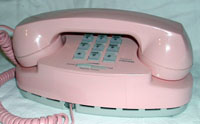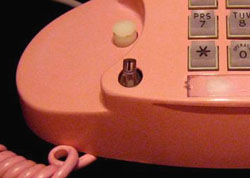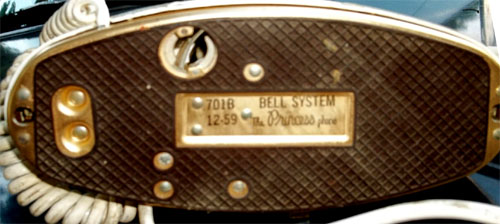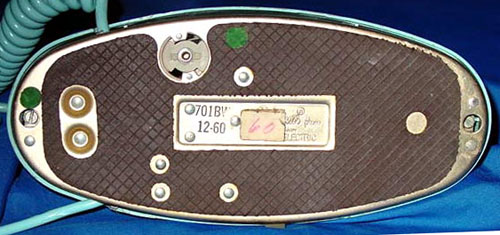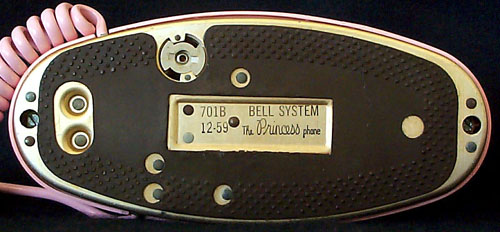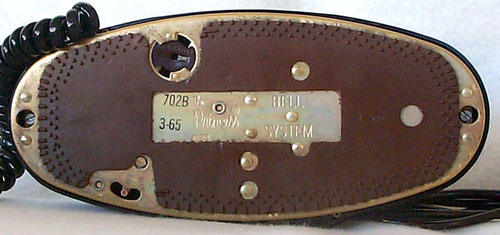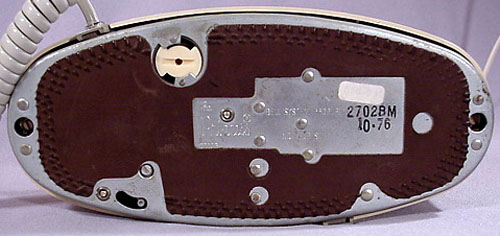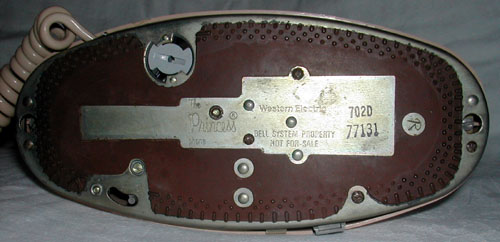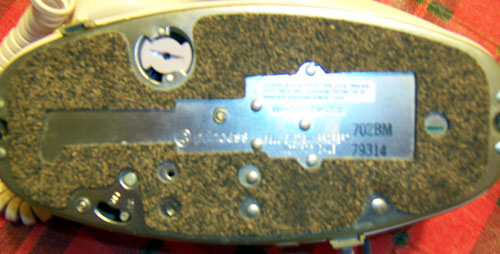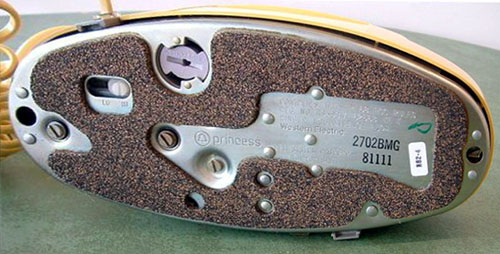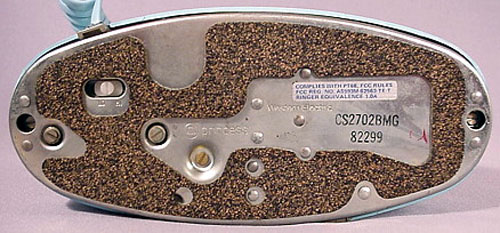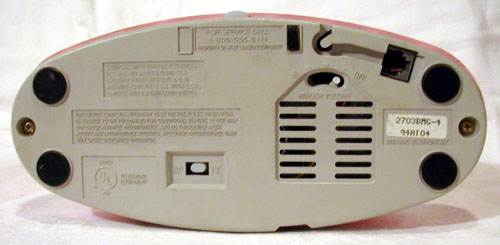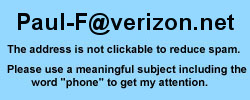|
Model
|
Major Functions
(all are desk sets.)
|
BSP
|
|
|
Early single line model with dial
light/night light but no internal ringer.
Available starting in 1959. Replaced by the 702B
in 1963.
Optional lead weight added to improve
dialing (D-179924) in April, 1962.
|
C38.670
502-701-100
502-710-100
502-710-200
502-710-300
502-710-400
|
701D
|
Early single line model with dial
light/night light and message waiting lamp but no
internal ringer.
Replaced by the 702D in 1963.
Optional lead weight added to improve
dialing (D-179924) in April, 1962.
|
C38.670
502-701-103
502-710-100
502-710-200
502-710-300
502-710-401
|
|
702B

|
Single line model with dial
light/night light and internal ringer.
The 702's case is a bit higher than
the 701's due to the ringer, so there's no notch for the
handset cord.
Available starting in 1963.
|
C38.670
502-701-100
502-710-100
502-710-200
502-710-300
502-710-403
502-710-405
502-721-402
|
702D
|
Single line with flush-mounted neon
message waiting lamp.
|
C38.670
502-710-100
502-710-200
502-710-300
502-727-402
|
711B
|
2-line with slide switch line
selection, signaling, extension set exclusion, no
hold. No internal ringer.
Used with 1A home interphone, 2A farm interphone, 3A
speakerphone or 1A1/1A2 KTS.
|
C38.670
502-701-103
502-710-100
502-710-200
502-710-300
502-710-410
|
|
712B
|
2-line with turn switch line
selection and signaling and hold (raise the left
plunger). No internal ringer. Used with 2A farm
interphone, 3A speakerphone or 1A1/1A2 KTS. (See
1712B turnkey below.)
The hold feature can be wired to work on either line
(not both) or the left plunger can be used to activate
an exclusion switch. See the BSPs for wiring
options.
|
502-701-101
502-710-100
502-710-200
502-710-300
502-710-415
|
712BC
|
With turn switch key for Secretarial service and
signaling. No internal ringer.
See WE Secretarial
Sets
|
502-701-101
(Issue 1, Fig 4)
|
|
713B
|
2-line with turn switch line
selection and signaling and hold (raise the left
plunger). No internal ringer.
Available starting in 1966.
|
501-701-103
502-710-101
502-715-413
502-727-404
|
